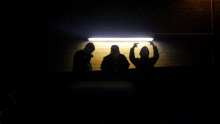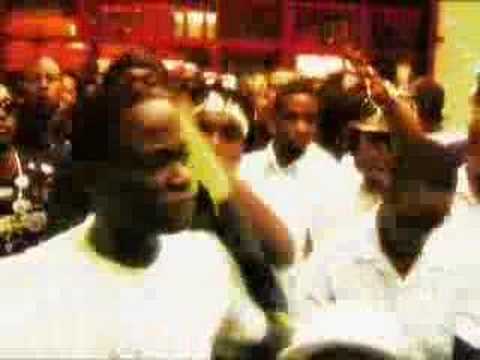
 In creating the oldest school of death metal, Americans turned toward punk song format with metal riffs, and Europeans adapted the riff salad of later death metal into simple narrative constructions that interrupted a verse-chorus tendency with discursive passages that returned to previous themes, often quoting them in basic counterpoint of rhythm or melody, in the style first seen on Hellhammer’s “Triumph of Death.” Asphyx labors within this style, creating music that is as much doom metal as it is death, with basic patterns wearing themselves into the listener through variations of repetition and layers of emphasis from bass and drums and keyboards, breaking up this meditative atmosphere with sudden rushing tremolo riffs and seizures of rhythmic motion into poised expectation.
In creating the oldest school of death metal, Americans turned toward punk song format with metal riffs, and Europeans adapted the riff salad of later death metal into simple narrative constructions that interrupted a verse-chorus tendency with discursive passages that returned to previous themes, often quoting them in basic counterpoint of rhythm or melody, in the style first seen on Hellhammer’s “Triumph of Death.” Asphyx labors within this style, creating music that is as much doom metal as it is death, with basic patterns wearing themselves into the listener through variations of repetition and layers of emphasis from bass and drums and keyboards, breaking up this meditative atmosphere with sudden rushing tremolo riffs and seizures of rhythmic motion into poised expectation.
Missing are the slamming conclusions common to much of death metal, as well as most use of percussive muffled strum to anchor phrases; where rigid sounds occur, they are in a riding rhythm that melds with percussion to form a cadence just ahead of itself, leading by consistent pattern instead of the predictable “unpredictable” offtime work of the jazzier death metal. Evenly-falling moribund rhythms, like an acceptance of inexorable death after exhaustion on the battlefield, lead into sudden changes of direction that once accepted as axiom, permute through intercessory riffs into a pattern that complements the original, even if at twice or half speed. Unlike many bands, Asphyx know the wisdom of reusing notes in the course of a phrase, and thus avoid the excesses of progressive bands; indeed, one amazing attribute of this death metal band is their outsiderness: songs are complex stories told through primitive musicianship that periodically breaks facade to reveal a facile ability underneath, and while an epic sound of doomy heavy music prevails it manages also to sound careless and spontaneous.
Problems abound, mostly from the mixed heritage of death metal, such as times when variations on heavy metal and punk hardcore cliches emerge and disrupt a flow of otherwise immaculate although rudimentary riffcraft. Vocals are hoarse barks whipping forward the mixture of percussion and rhythm guitars that, with double bass and flickering of high-hat, sounds almost like a team of stallions at full gallop. While this album has some highly visible flaws, and lacks the slickness of conceit (“unique” instrumentation, sound and concept) that adorned later bands, its honesty and evocative songwriting guarantee it a place in the legions of metal bands that shaped the underground. (ANUS)
 Don't Watch That
Don't Watch That



